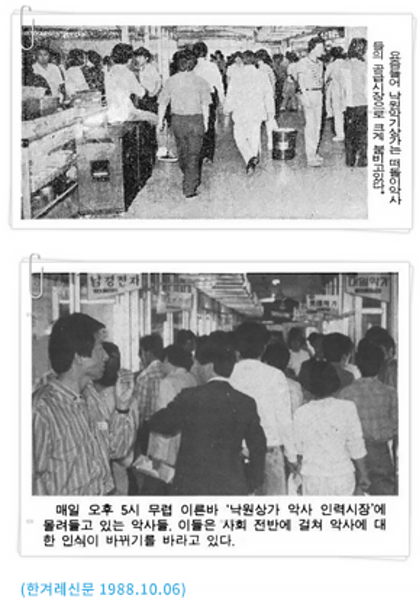The Beginning of the World’s Largest Musical Instrument Arcade in Nakwon-dong
Nakwon Arcade is the world’s largest musical instrument shop complex. There are over 300 shops on the second and third floors of the arcade, and its size is beyond comparison to that of other musical instrument specialty stores. In addition, there are offices related to instruments, practice rooms, and an outdoor stage called Art Lounge Meotjin Haneul on the fourth and fifth floors, making Nakwon Arcade the most solid hardware base in music industry.The musical foundation of Nakwon Arcade is the result of 40 years of history. It is the fruit of history as instrument shops and musicians started to gather around and ordinary people also started to have musical hobbies. Just as it takes a long time to master an instrument, Nakwon Arcade has also gone through essential period of time to consolidate its status as a central attraction of instruments and music.
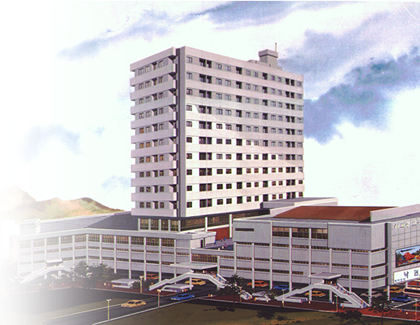
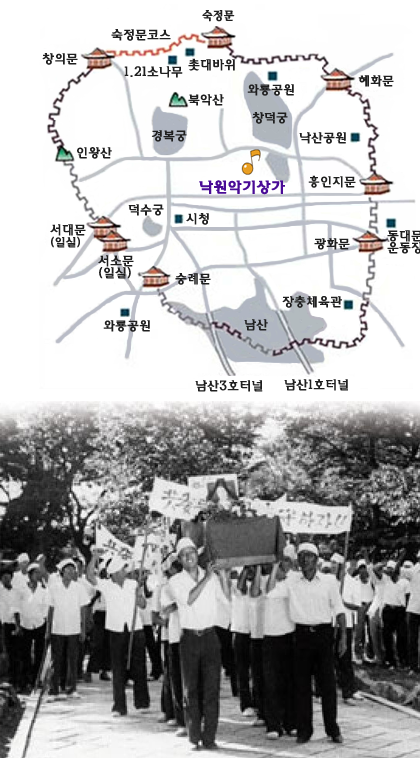
How did the arcade begin?
Since the beginning was not planned by someone, it is difficult to give a precise explanation about its beginning. However, we could provide a sensible explanation based on the flow and circumstances of the times.Entertainment Passed Down through the Joseon Dynasty
The Jongno area, such as Nakwon-dong, Iksun-dong and Insa-dong, used to be the center of entertainment culture with pubs and bars during the Joseon Dynastry. The area is around the front road of Changdeokgung Palace and Pimat-gil (literally, avoid the horses street; the street where people had to stand aside to let the processions of high ranking officials on palanquins and horses) next to it. Restaurants, pubs, and bars naturally gathered in this area as there were many passers-by in this area. Such culture in this area continued during the Japanese colonial period and after independence it has become a social center where musicians and celebrities would hang out.Independence, War and Chaos
There is some historical background as to how the Arcade has become even more central to music industry in Korea after the independence. The society was going through chaos after the independence. It was not easy to reconstruct society and people were going through lots of hardships. Furthermore, the outbreak of the Korean War only a few years later made the situation even worse. The post-war situation was a chaos itself. The social system based on aristocracy passed down from generation to generation has collapsed, and making a living has become a dire priority. In such abnormal circumstances, people faced many agonies and conflicts. For instance, servant and his or her old master would meet as they returned home after the war. But the relationship is no longer a masterservant relationship. That might be still bearable. But as the servant became wealthier while the master continued to get poorer, reversal of fates took place. Maybe in the beginning the despise of the the former master was subtle, but it would become more explicit with time. Such reverses between the high and low classes were not uncommon at the time and it caused severe social tensions.Even without such reversal of status, life was hard and society was extremely unstable. To ease such a pressure, a drink and some music were essential. The Jongno area, which had been a traditional center for drinks and music since Joseon Dynasty, continued to maintain its characteristics during such difficult times due to the necessity of the people.
Economic Growth, yet Sorrow Increases
Since the 1960’s, the economy started to grow, and economic growth really began to be on a fast track from the 1970’s. Aside from the complicated issues of political problems, the economic aspect started to get better for people. On the other hand, such economic growth muffled people’s voices. The continued outcry for democratization was silenced by force, and ordinary people had to live in silence. Such a resentment of the time was poured out in alcohol and music, and the market could expand as the economy grew. Hence the entertainment scene in the Jongno area grew bigger and bigger.Explosion of Korean Pop Music
With the rise of the Beatles in the early 1960’s, rock music reached to its peak across the globe during the 60’s and 70’s, and many rock bands emerged in Korea as well. At the time, they mainly performed in clubs of the 8th US Army base in Yongsan. Except Shin, Jung-hyeon’s band, most of the bands performed cover versions of foreign songs. Nevertheless, their standard of performance was quite high. Such formation of rock bands naturally led to the demand for new instruments. With the appearance of the “Twin Folio” in the early 1970’s, there followed an acoustic guitar boom, which also led to the high demand for acoustic guitars.As mentioned earlier, lots of musicians used to reside around Nakwon Arcade, and more and more instrument shops opened their businesses at the arcade as the demands kept on growing in the 60’s and 70’s. The local characteristics, full of entertainment culture, matched the growth of the instrument market. The arcade was not always filled with instrument shops. In the 70’s, there were more boutiques (shops selling clothes, accessories, etc.) and furniture shops. From the 80’s and on, however, the arcade started to look like a musical instrument shop complex. There was another circumstance: a night curfew was lifted as of January 6, 1982. Before then, people had to go home before midnight.
As the curfew was lifted, they could enjoy over night activities and fun. This led to the vitalization of night stages, which caused a rapid rise in the demands for bands, musicians and instruments. This market flourished until night business was banned in the 90’s. Watching the instrument market grow, Nakwon Arcade started to make efforts accordingly and reorganized itself focusing on instrument shops. The arcade saw the rise of instrument market as an opportunity customized for it and put efforts into firmly creating itself as the “Nakwon Musical Instrument Arcade”.
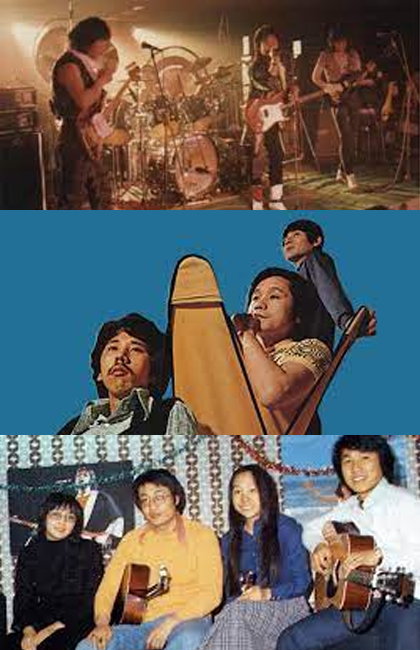
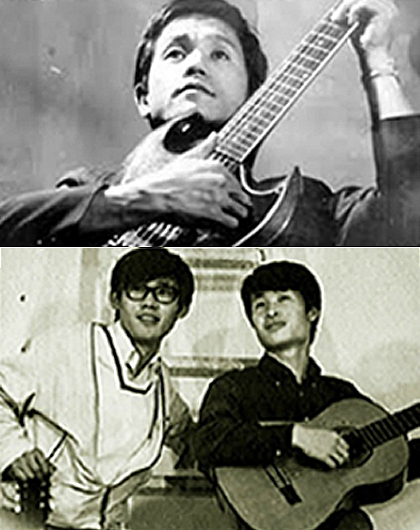
Nakwon Musical Instrument Arcade, an Essential Hangout for Musicians
Along with the development of bands, the number of stages where musicians could perform increased in the 70’s and 80’s, and the number of musicians also skyrocketed. In other words, the number of people who performed as a professional musician went up. The stages where people could perform were mainly in nightclubs, and musicians would start to gather during the day and look for places to perform.There was a simple reason why they gathered in one place: To share information and look for people to substitute absentee band members. It was a different world back then: There were no smart phones or internet, and even phones were not that common. In such circumstances, the quickest and most certain way to share information with people was meeting them in person. It was prerequisite to share information about great stages and places that were recently attracting people from others in the same profession. Moreover, people mainly performed on stage in a band format, and they often needed substitutes.
There were also cases where they needed more instruments due to the nature of the stage and where they had to reduce the number of instruments. Sometimes a member would not show up because he drank too much the night before, and sometimes the band members would break up because of differences in interests. There always occurred cases where people had to promptly reorganize the team and hence the need for the gathering of musicians in one place. It was natural for the musicians to gather in one place and the meeting point was Nakwon Arcade. This was not only because instrument shops were there, but also because it was difficult to find spaces as large as Nakwon Arcade at that time. There were not many indoor spaces where many people could hang out together. Large, sturdy and clean buildings were not common at all until the 80’s. Moreover, how many buildings were there that would provide space for hundreds of musicians? The size of each floor of the arcade is still considered substantial. There was no other building as suitable as Nakwon Arcade for hundreds of musicians to meet. This was how the arcade was able to develop a good partnership with instruments and musicians. In the 80’s, when musicians gathered the most, around 300-500 musicians would fill the arcade.
